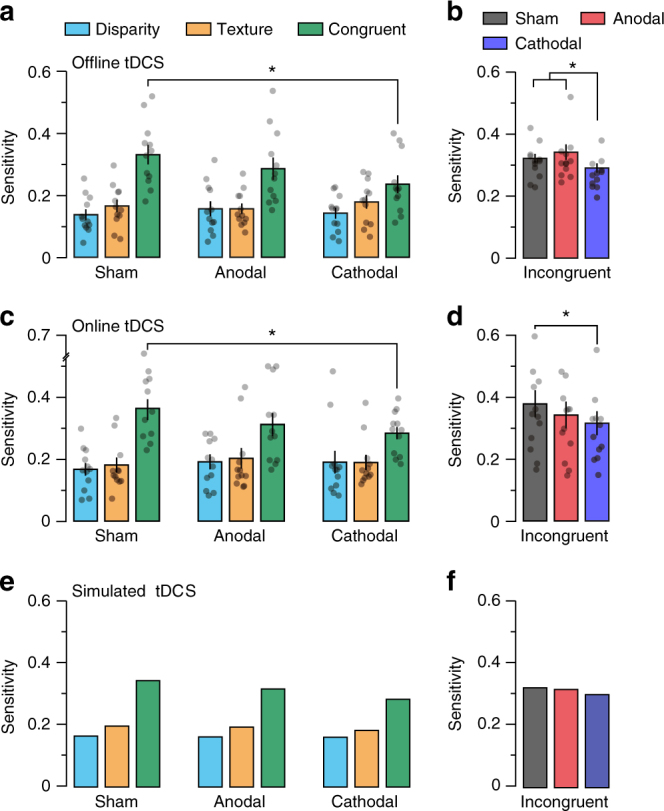Fig. 5.

Behavioural and model simulated effects of tDCS on single-(texture/disparity), congruent- and incongruent-cue conditions. a, b Perceptual sensitivity for slant defined by a single (texture/disparity), congruent and b incongruent cues following 20 min sham, anodal, and cathodal stimulation targeting V3B/KO. c, d Same as a and b but during stimulation. RM ANOVA was used to test for main effects across experimental conditions. In a there was a significant main effect of stimulus type (F2,22 = 23.25, P = 3.7e−6) and a significant interaction (F4,44 = 4.40, P = 0.004). In b a significant main effect of stimulation (F2,22 = 4.76, P = 0.02) was followed by paired t-tests: sham vs. cathodal conditions for congruent (t11 = 5.17, P = 3.0e−4, Cohen’s d = 1.49) and incongruent cues (t11 = 2.58, P = 0.02, Cohen’s d = 0.74). c, d We tested the reproducibility of these effects and found significant differences between sham vs. cathodal conditions for congruent (t11 = 2.61, P = 0.02, Cohen’s d = 0.75) and incongruent cues (t11 = 2.46, P = 0.03, Cohen’s d = 0.71). Asterisks highlight significant differences P < 0.05. Semi-transparent black dots indicate individual data points and error bars indicate SEM. To test whether these effects could be captured by the model, we first simulated performance in the sham conditions of the a–d tDCS experiments (e, f, sham conditions). We then simulated anodal and cathodal stimulation by fitting two additional free parameters using the tDCS effects measured in the single- and congruent-cue conditions (e, anodal/cathodal conditions); these parameters model the effects of tDCS on inhibition and excitation. Finally, we simulated performance for incongruent cues (based on the fixed parameters) (f, anodal/cathodal conditions). The model predictions match the mean experimental data
